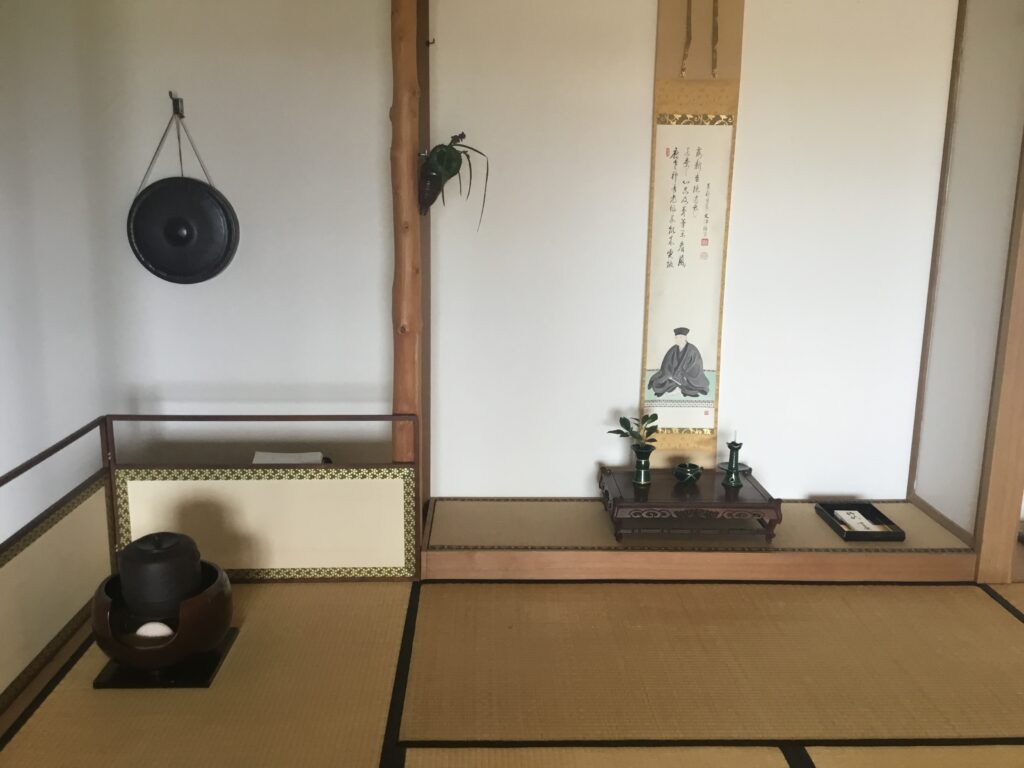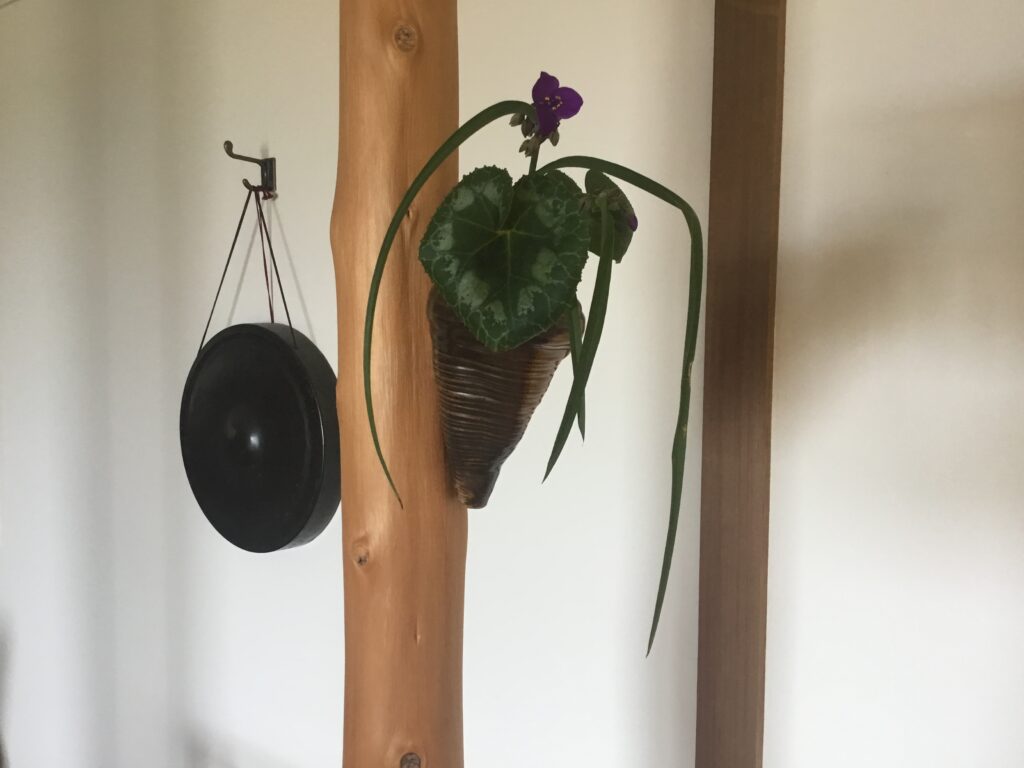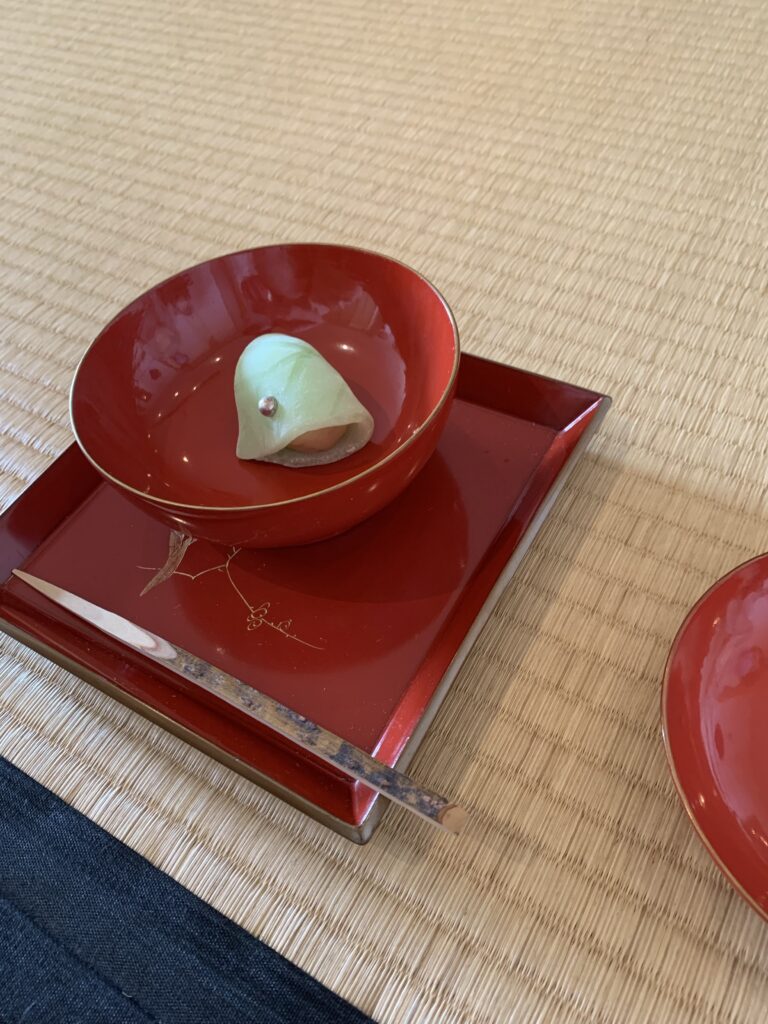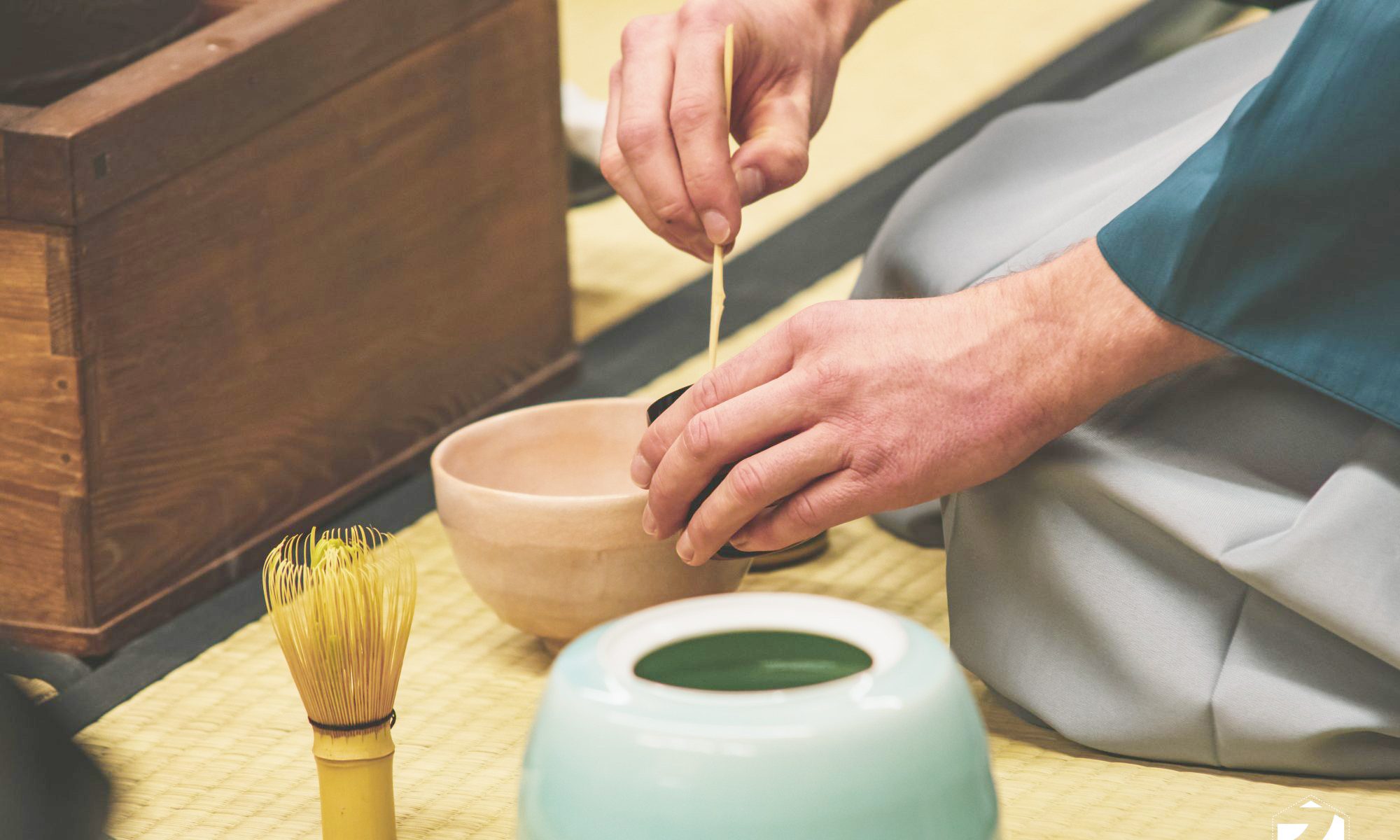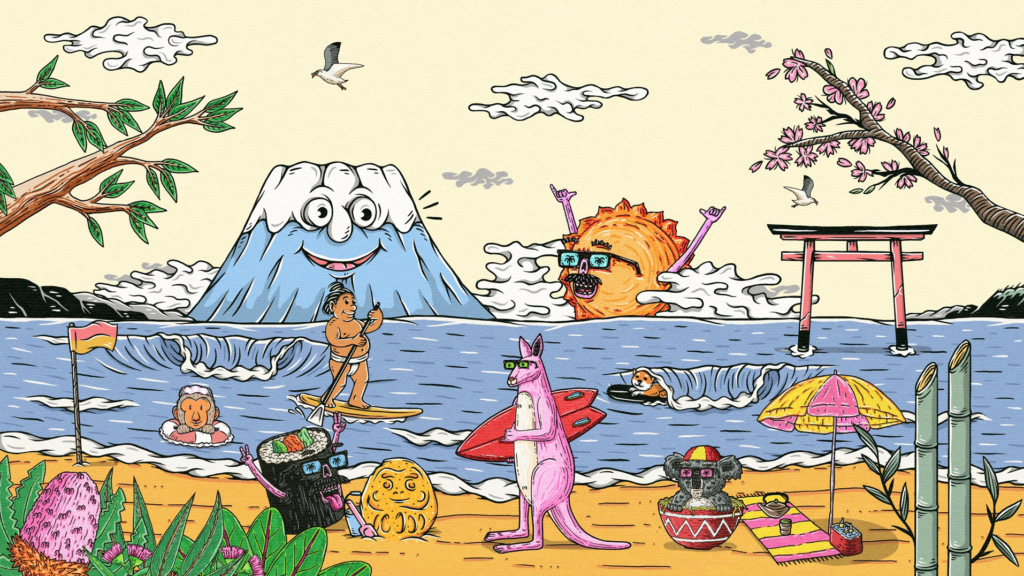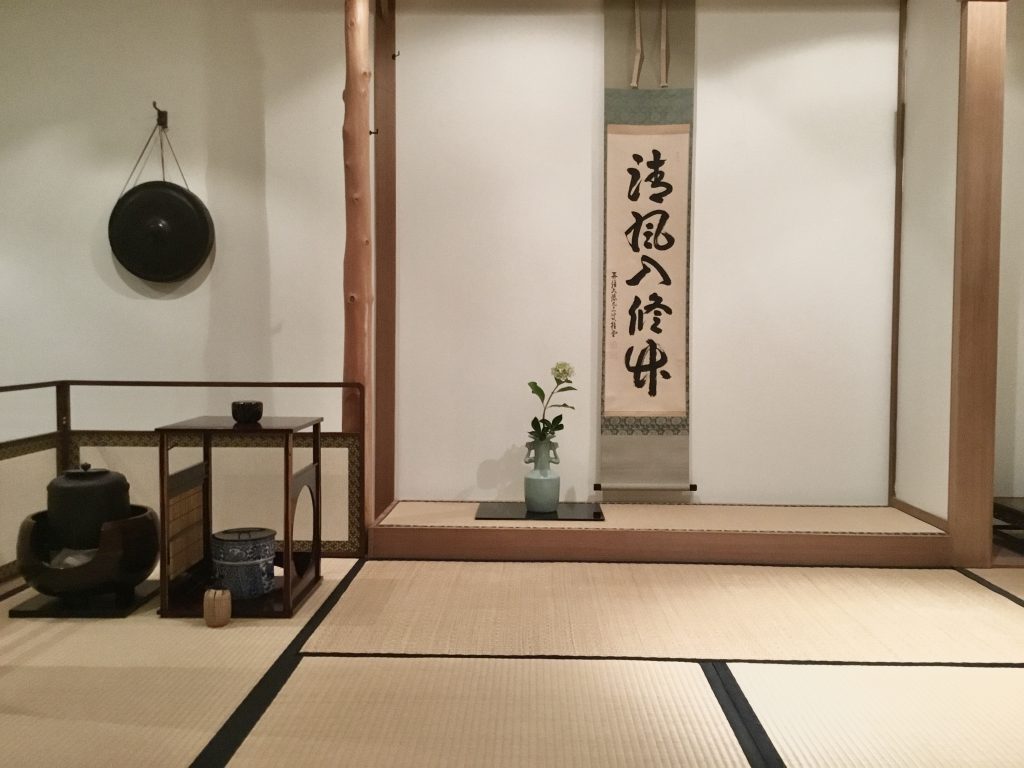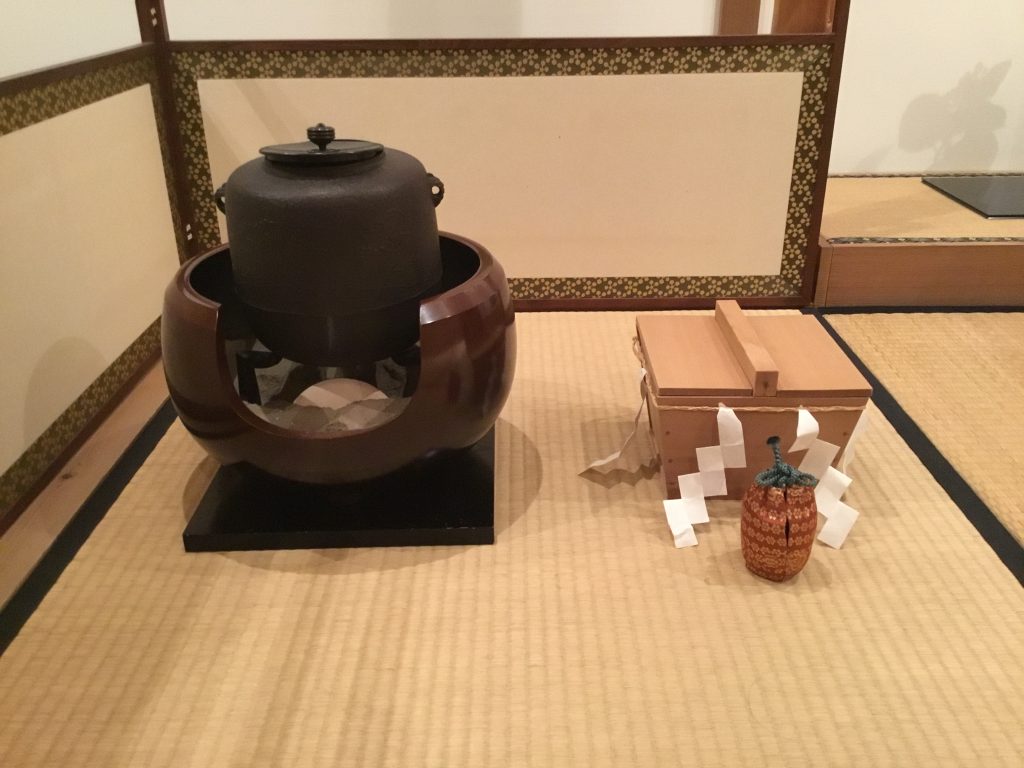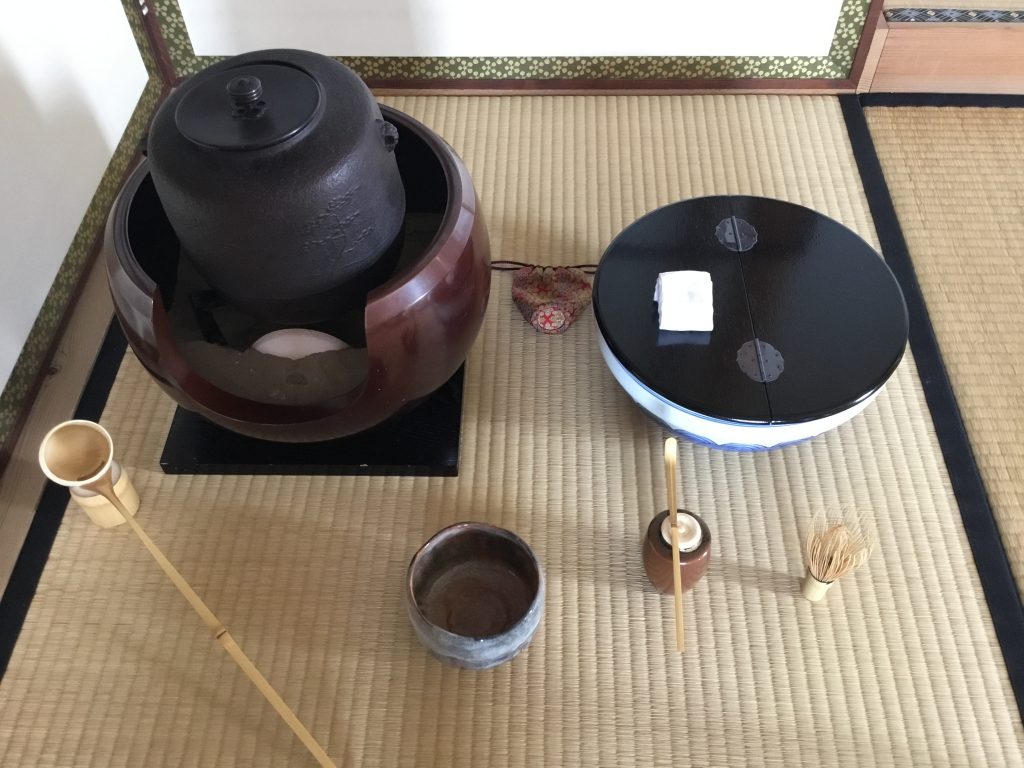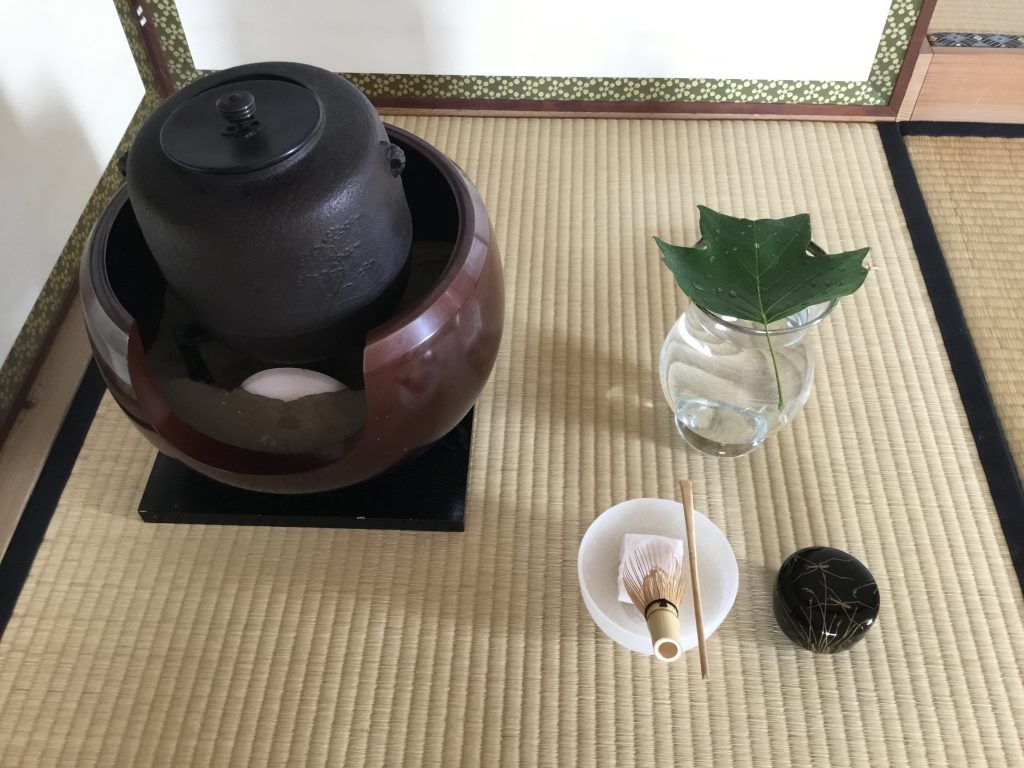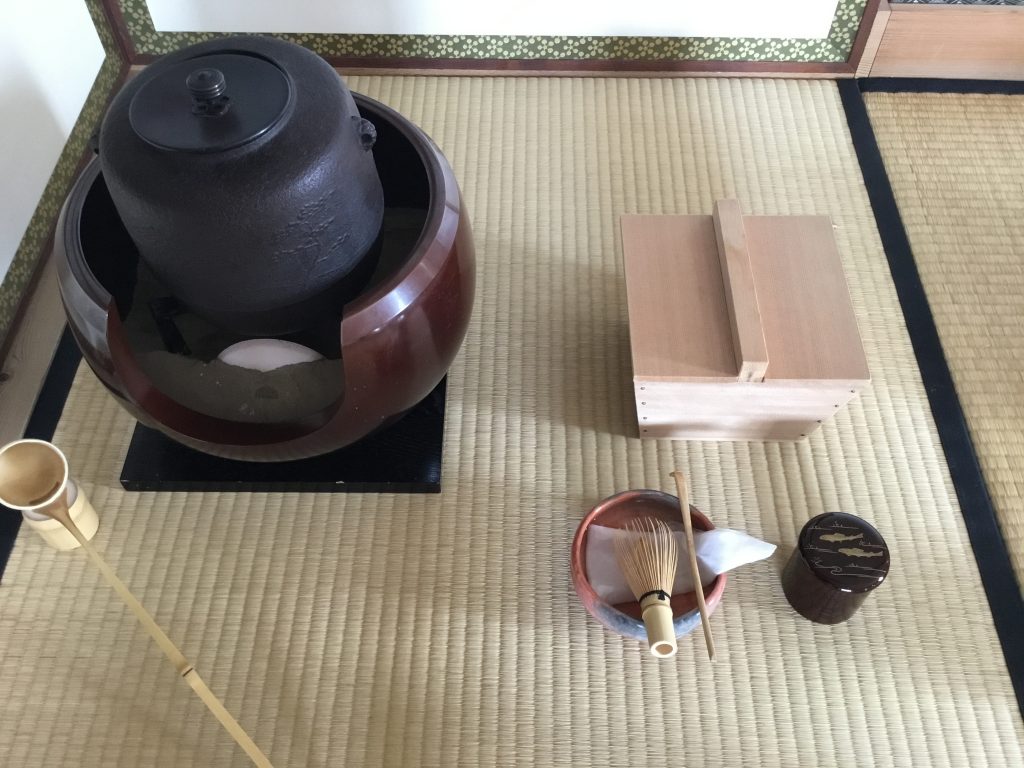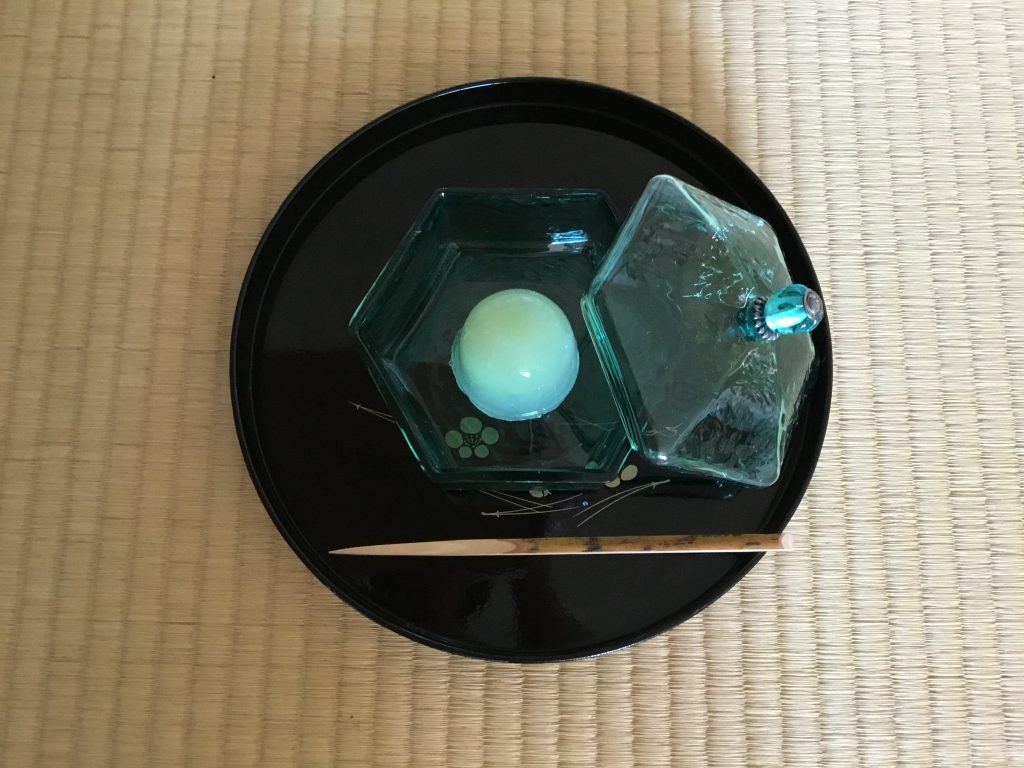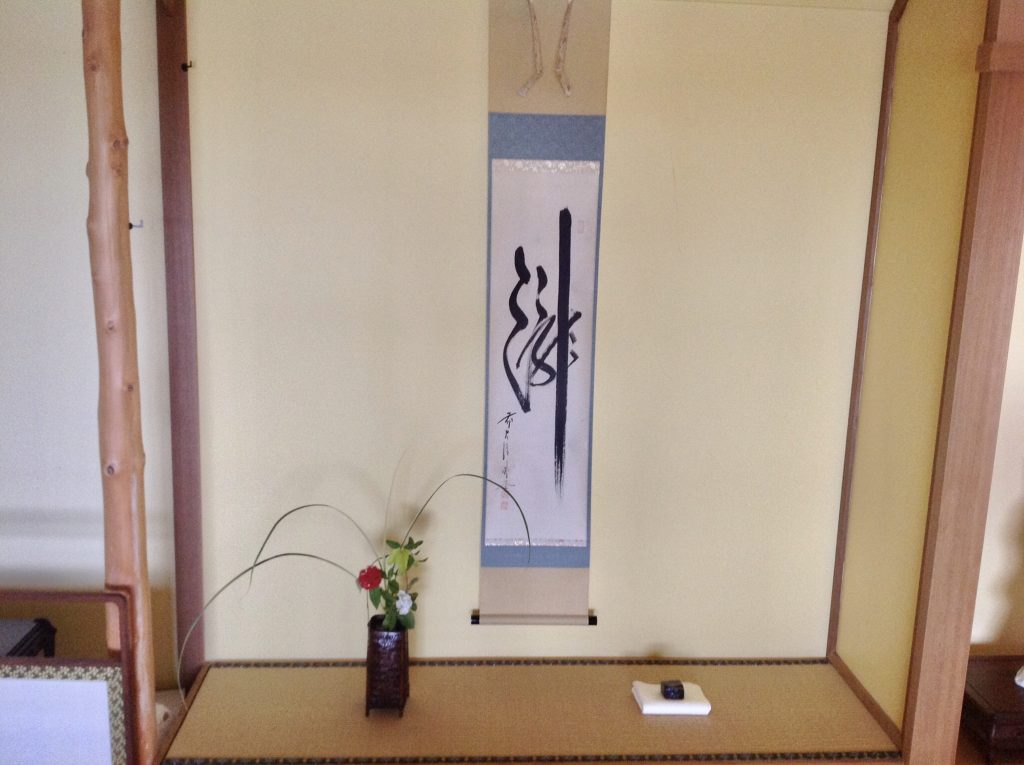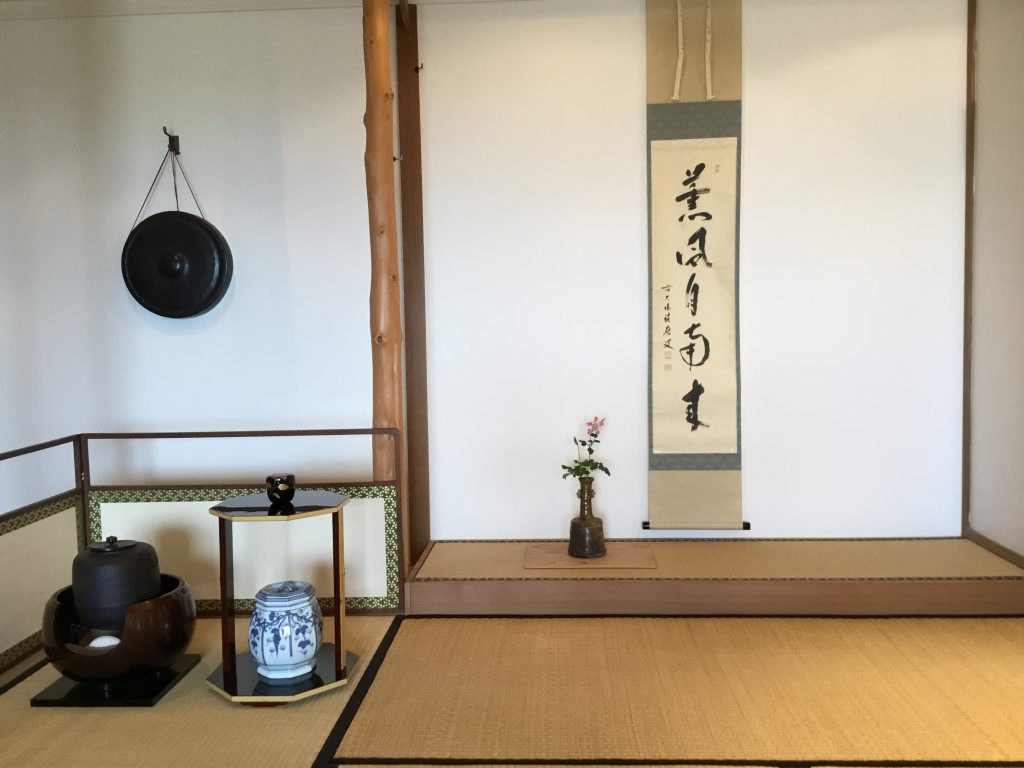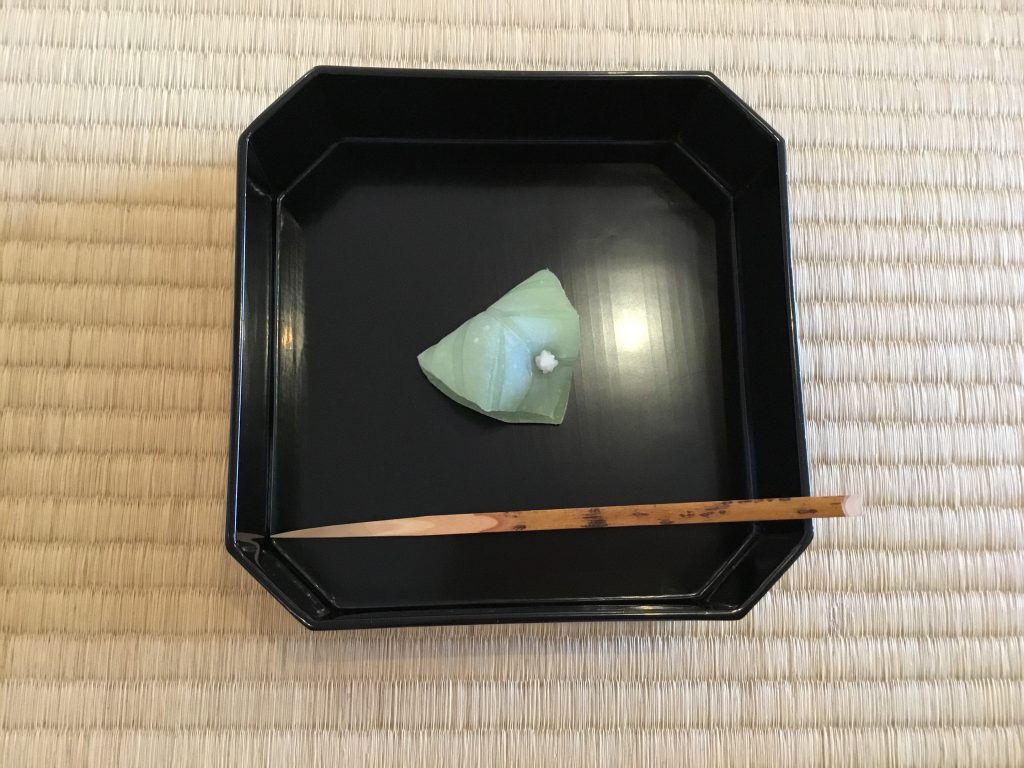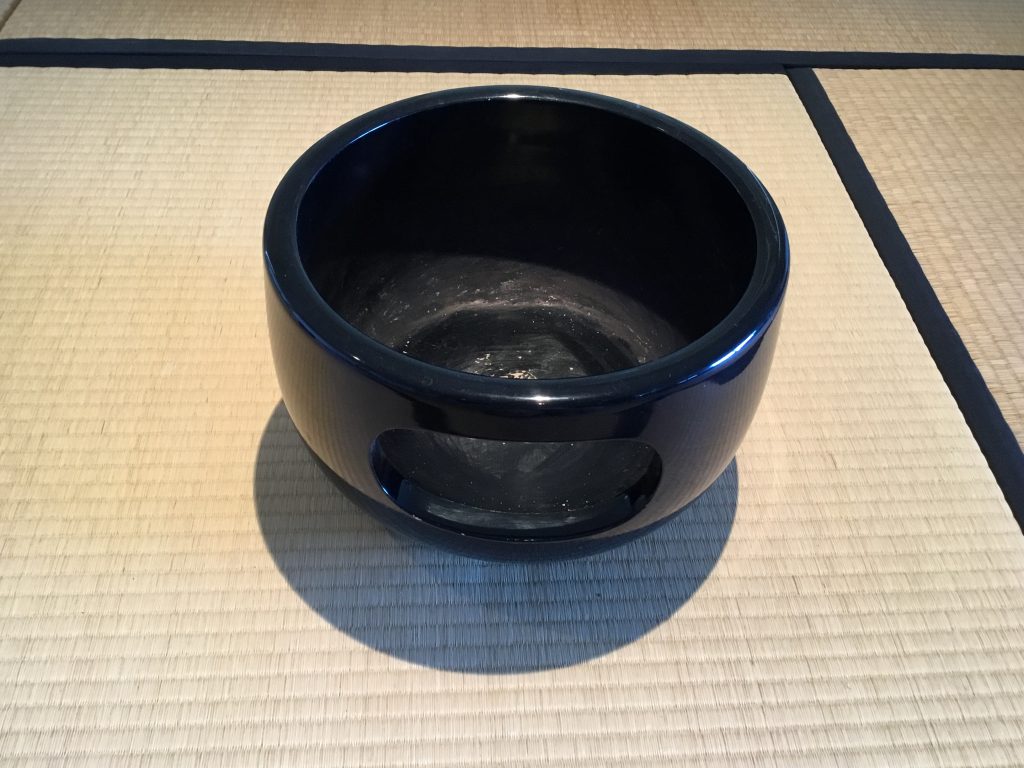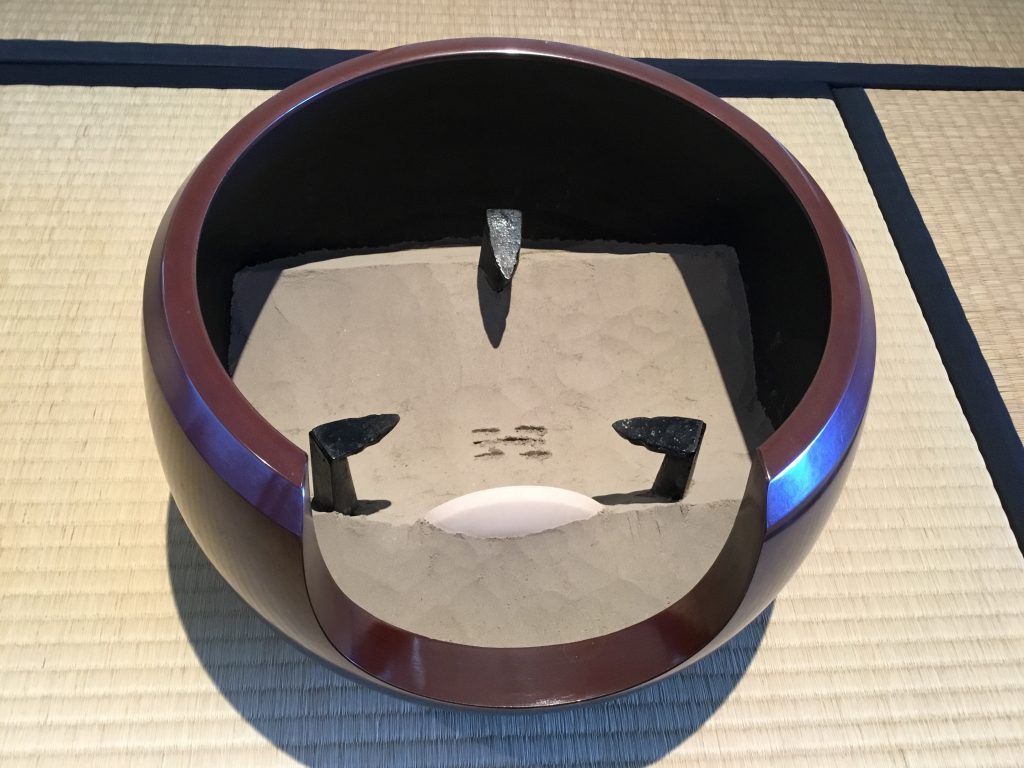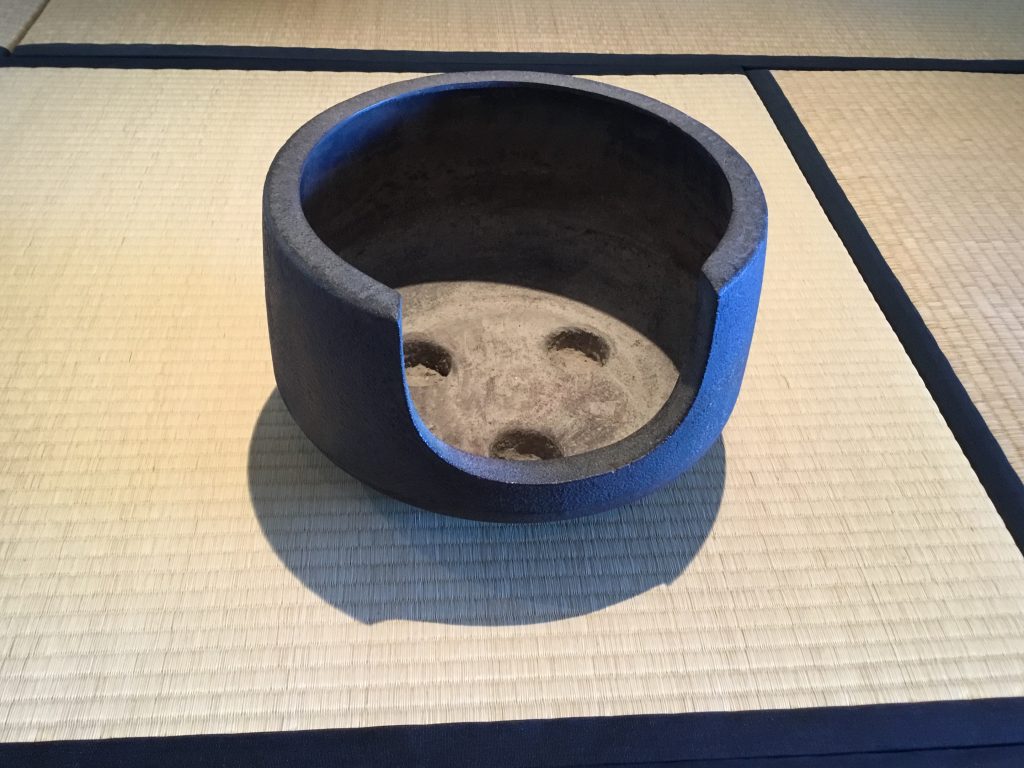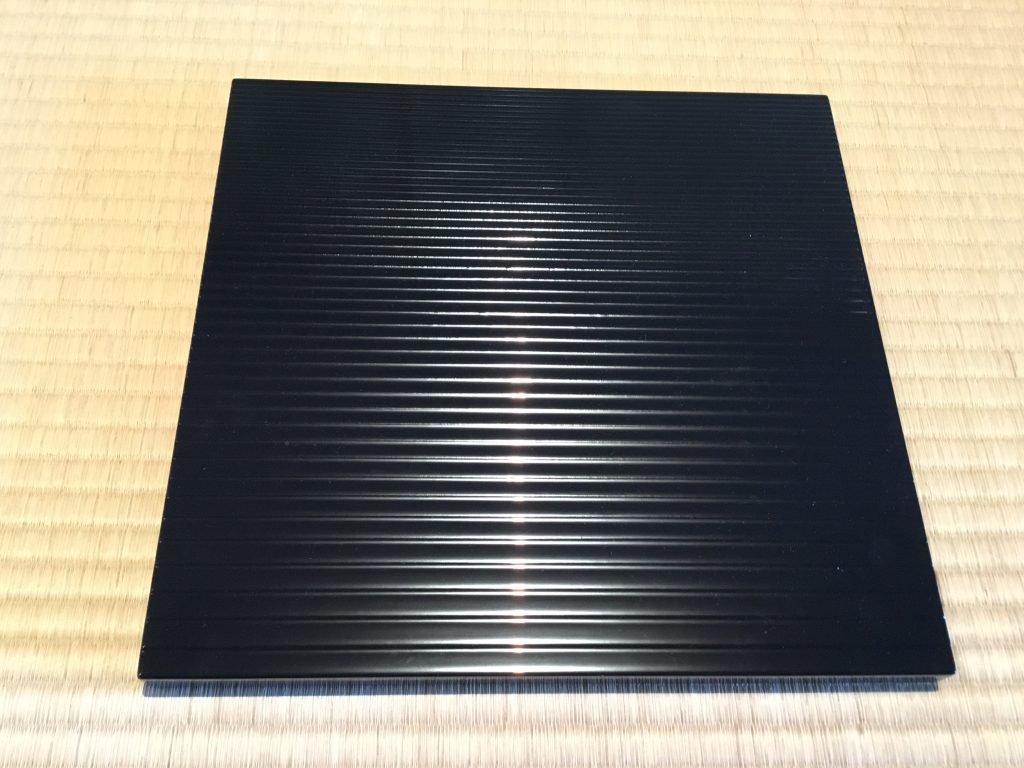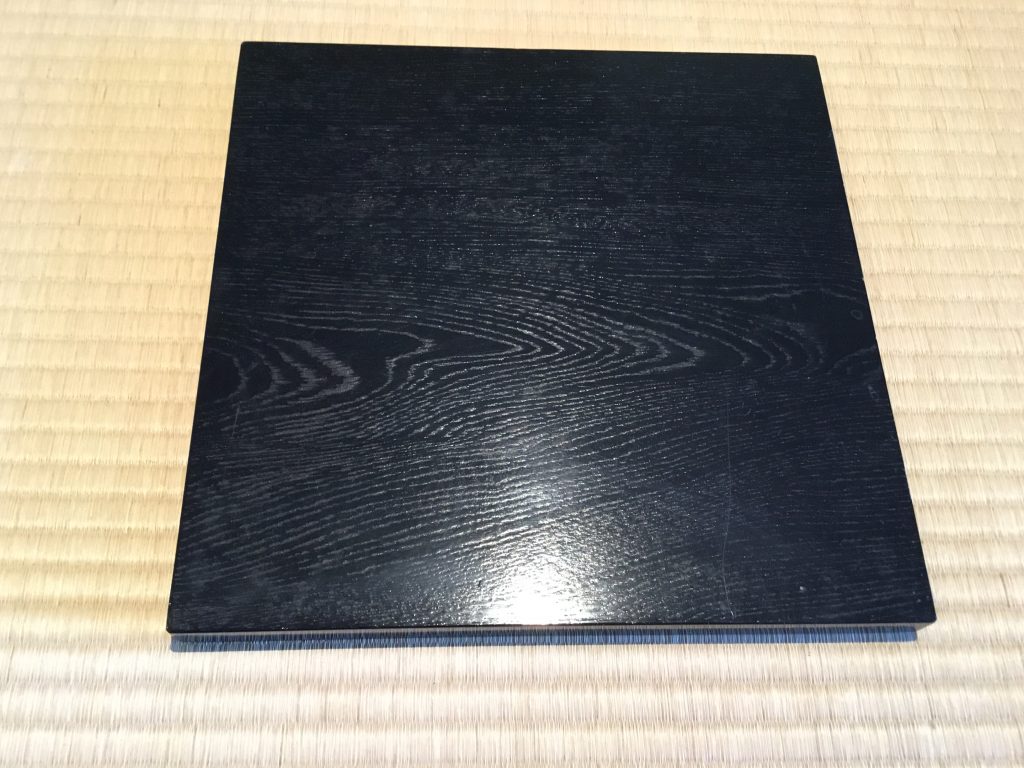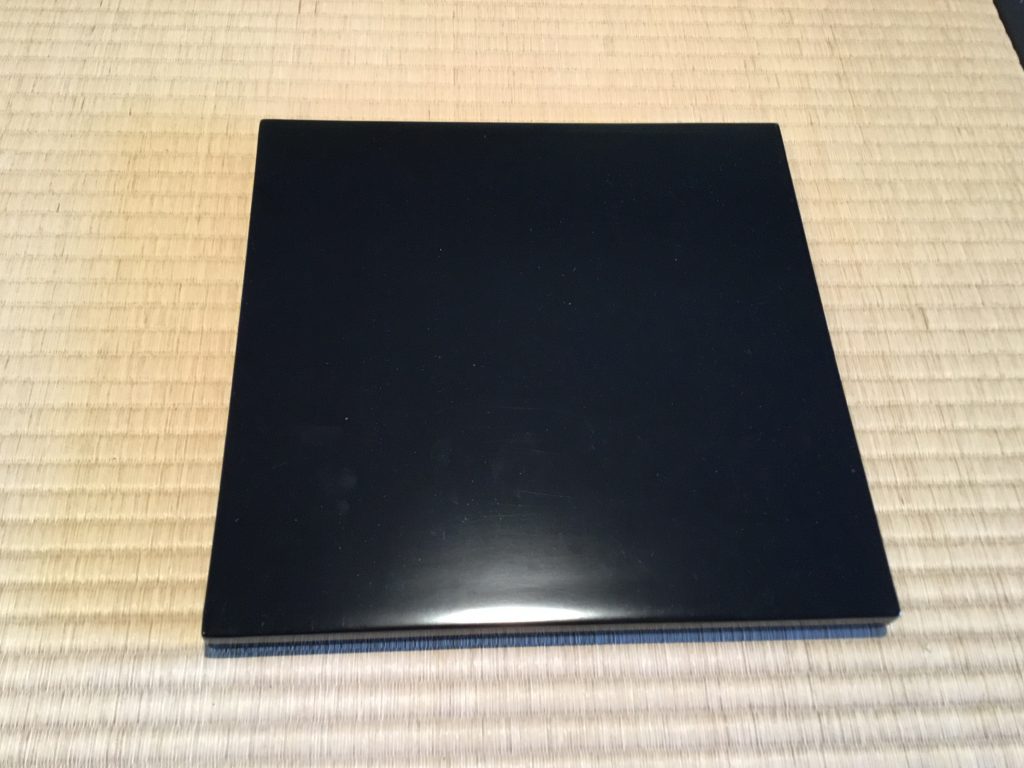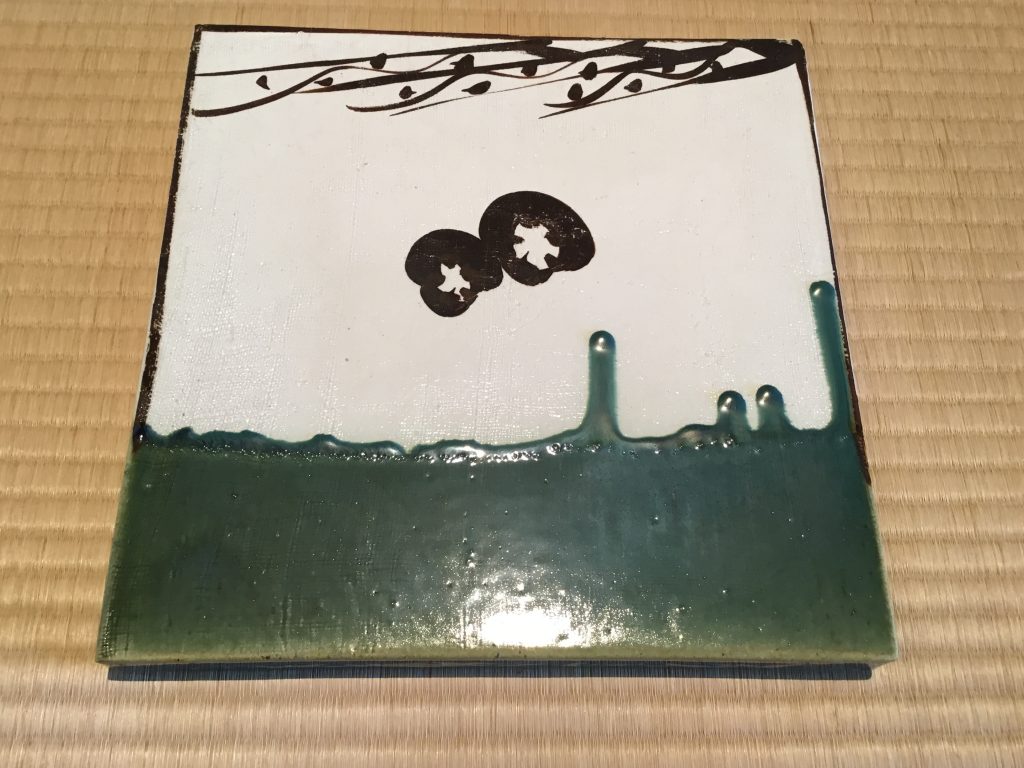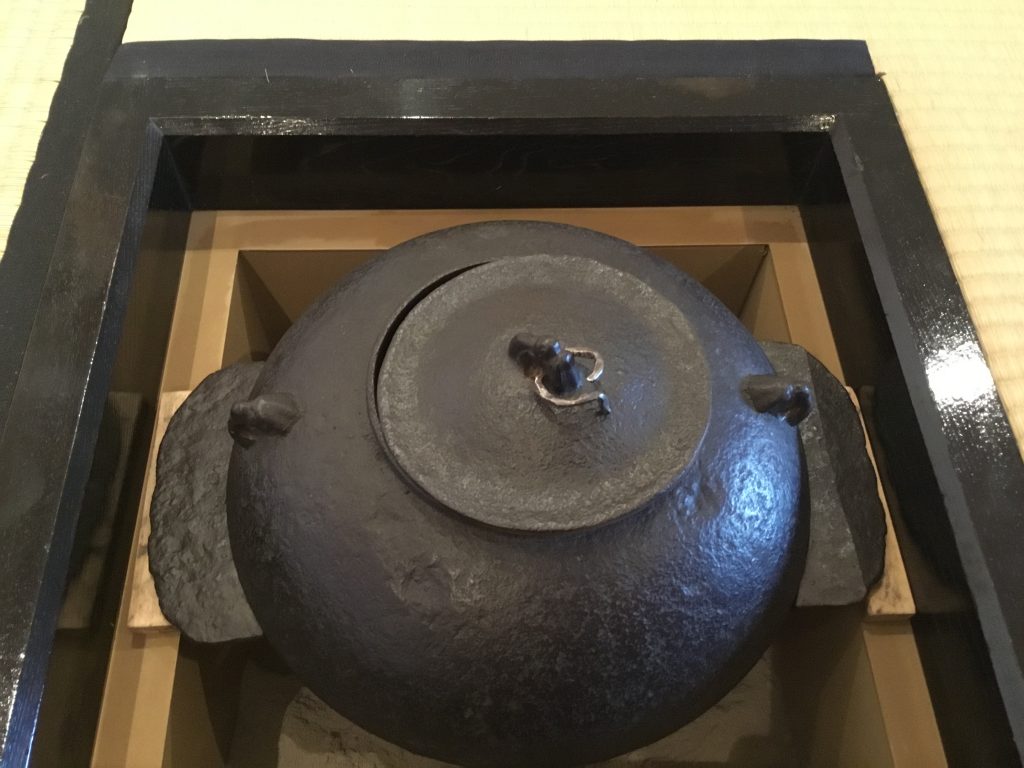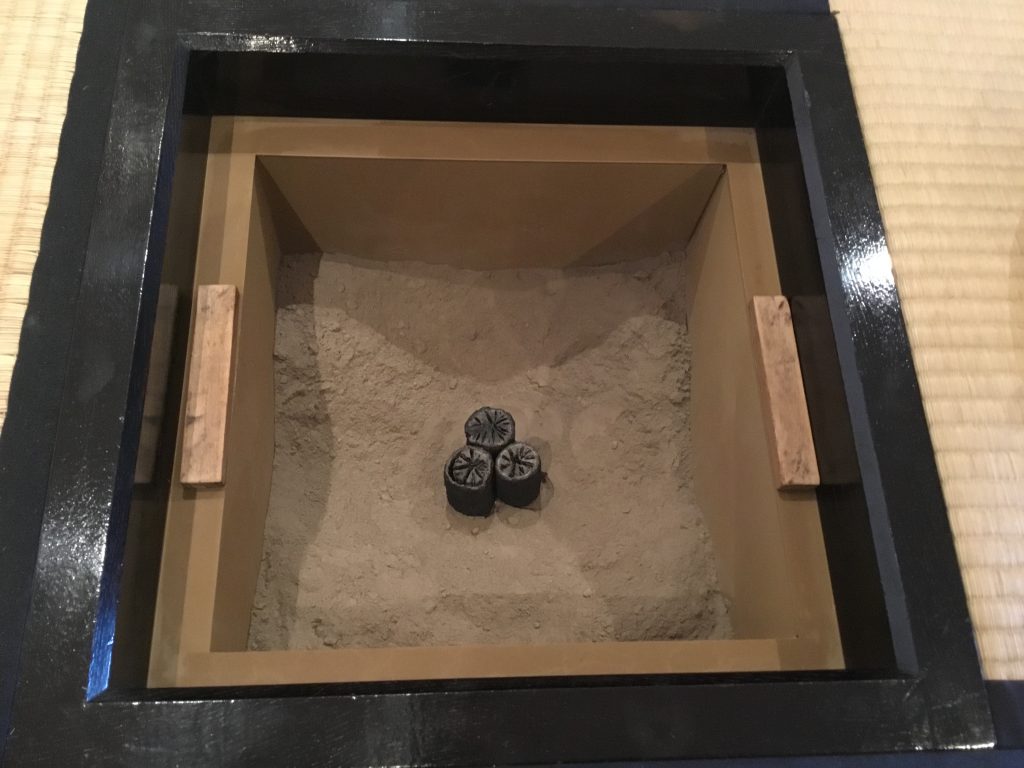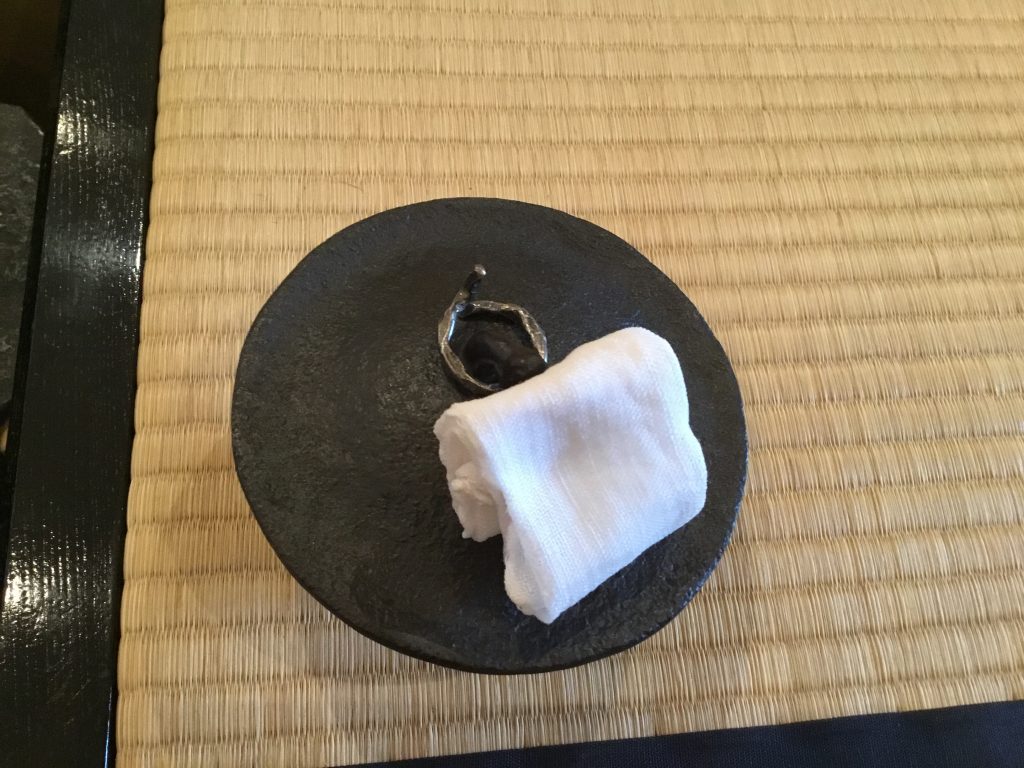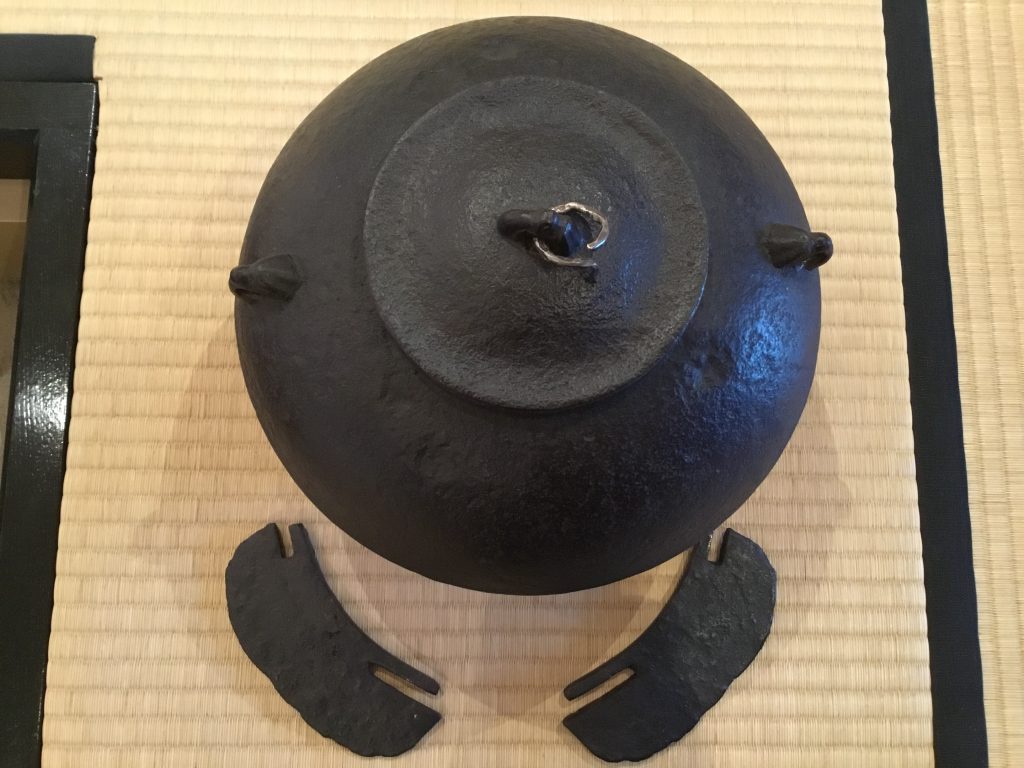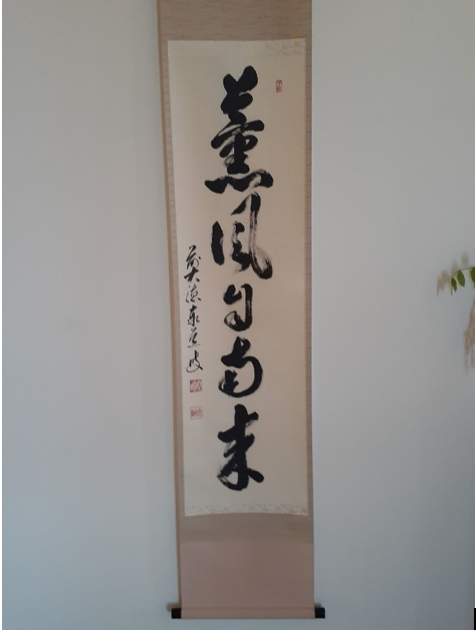May in Japan is a beautiful time, temperature is just right, fresh green new shootings are shining in the sun and late spring flowers such as irises, azaleas, wisterias, etc. are in flower.
In the tearoom, 炉 ro is now closed and 風炉 furo is set until the end of October.
風炉 furo was the only water boiling device until 炉 ro was introduced by 村田珠光 MURATA Jukou in late 15th century. Before 珠光 Jukou, 風炉 furo was a part of 唐銅台子皆具 ( bronze daisu- full set ) and 切掛風炉 kirikake-buro ( type of furo on which kama sits without kama stand ). During the time of 珠光 Jukou, 武野紹鷗 TAKENO Jouou and 利休 Rikyu various types of 風炉 furo were introduced.
See Photo 3.
– 唐銅風炉 karakane-buro ( bronze furo ) See Photo 4.
the top and the front and with clay linings inside )
eyebrow ) of 土風炉 do-buro See Photo 3.
– 行 gyou; 土風炉 do-buro without eyebrows, 唐銅風炉 karakane-buro
See Photo 4., brass furo, etc.
– 草 sou ; 鉄風炉 tetsu-buro, 陶磁器の風炉 toujiki no furo and
板風炉 ita-buro
・Types of 風炉 furo by shapes
– 切掛風炉 kirikake-buro ( with the top opening smaller than kama and
kama sits on the opening edge without 五徳
gotoku)
– 眉風炉 mayu-buro ( a kind of 土風炉 do-buro with an eyebrow like
link at the top of front opening 五徳 gotoku is
used. ) See Photo 3.
– 道安風炉 Douan-buro ( with a large U-shaped opening at the front
五徳 gotoku is used .)
– 面取風炉 mentori-buro ( a kind of 道安風炉 Douan-buro with beveled
top edge ) See Photo 4.
– 四方風炉 yohou-buro ( rectangular furo )
– 紅鉢風炉 benibachi-buro ( rather small porcelain furo )
– 欠風炉 kaki-buro ( a kind of 鉄風炉 tetsu-buro with some parts
missing suitable for the end of 風炉 furo season )
風炉 furo naturally becomes very hot, and a kind of board is placed under 風炉 furo to protect tatami.
・Types of 敷板 shiki-ita ( boards under 風炉 furo )
– 長板 naga-ita
– 半板 han-ita ( half of 長板 naga-ita in width)
– 大板 oo-ita ( large board, about 42x42cm square )
– 敷瓦 shiki-gawara ( porcelain board of about 30x30cm square )
for cast iron furo. SeemPhoto 9.
– 小板 ko-ita ( small Board, about 30x30cm square, can vary )
荒目板 arame-ita ( black lacquered with horizontal lines, the
spaces between them becoming gradually
narrower. Wider side is the front. ) for
土風炉do-buro See Photo 6.
掻合塗小板 kakiawase-nuri ko-ita ( black lacquered showing
timber grains ) for 土風炉
do-buro and 唐銅風炉
karakane-buro
See Photo 7.
真塗小板 shin-nuri ko-ita ( black lacquered ) for
唐銅風炉 karakane-buro See Photo 8.
– 丸板 maru-ita ( round black lacquered showing or
not showing grains )
・ Combinations of 風炉 furo and 敷板 shiki-ita
土風炉 do-buro = 荒目板 arame-ita or 掻合塗小板 kakiawase-nuri ko-ita
唐銅風炉 karakane-buro = 掻合塗小板 kakiawase-nuri ko-ita or 真塗小板 shin-nuri ko-ita
鉄風炉 tetsu-buro = 敷瓦 shiki-gawara
陶磁器の風炉 toujiki no furo = 掻合塗小板 kakiawase-nuri ko-ita
四方風炉 yohou-buro = 丸板 maru-ita
・灰形 hai-gata ( formation of sculpted ash in a furo by spoons )
– 二文字押切 nimonji oshikiri
This is the most standard 灰形 hai-gata and can be used for most
風炉 furo of different materials and shapes. See Photo 4.
– 二文字掻上 nimonji kakiage
This is used only for 鉄風炉 tetsu-buro. Make 二文字押切 nimonji
oshikiri first and draw seven, nine or eleven vertical lines.
– 丸灰押切 marubai oshikiri
This is also commonly used particularly for 切掛風炉 kirikake-buro.
The shape is lake a crater with a circular ridge. If there is 五徳 gotoku,
make the ridge at the back of claws of gotoku.
– 丸灰掻上 marubai kakiage
This is used for most of 鉄風炉 tetsu-buro. Make 丸灰押切 marubai
oshikiri first and draw 16 or 24 radial lines from the edge of furo
wall towards the centre leaving the space for charcoal pieces.
– 遠山 tooyama
This is used for 道安風炉 Douan-buro and 面取風炉 mentori-buro.
Make the front ridge slightly round and shape a mountain at back
right in 風炉 furo for 本勝手 hongatte ( conventional tearoom setting
) and at back left for 逆勝手 gyakugatte ( opposite format tearoom setting )
– 向山 mukouyama
This is used only for 中置 nakaoki. Make the front ridge slightly round
and shape a mountain at centre back.
Photo 1
・軸 jiku; 一行 ichigyou 「薫風自南来 」前大徳 積應老師筆
“ Kunpuu minami yori kitaru. ( Fragrant wind comes from the south. )”
written by Saki no Daitoku Rev. Sekiou
・花入 hanaire; 信楽 砧 春斎造
Shigaraki ware mullet shape by Shunsai
・薄板 usuita ; 杉蛤端 unlacquered cedar board
・風炉 furo ; 唐銅面取道安風炉 寛斎造
bronze mentori Douan-buro by Kansai
・釜 kama ; 松地紋棗釜 正芳造
natsume shaped kama with pine tree patterns by Seihou
・棚 tana ; 鵬雲斎大宗匠好 竹寿棚 静峰造
Houunsai Daisoushou favoured “ Chikuju-dana “ by Seihou
・水指 mizusashi ; 古染付葡萄棚水指写 静山造
replica of old sometsuke grapevine trellis mizusashi by Seizan
・薄茶器 usucha container ; 紫陽花蒔絵中棗 龍斎塗
middle sized natsume with hydrangea makie by Ryuusai
Photo 2
主菓子 omogashi ; 「落とし文」 “ Otoshibumi ( dropped love letter )”
“ otoshibumi “ itself means a kind of beetle which lays
eggs in a rolled leaf. That rolled leaf looks like a scroll
of letter which people used to drop in front of a
person they were in love in old days before emails and
even telephones. This sweet is very popular during the
season when fresh new leaves are beautiful.
菓子器 kashiki; 輪島塗 真塗 縁高
Wajima lacquered fuchidaka box
by Itoko Inoue
